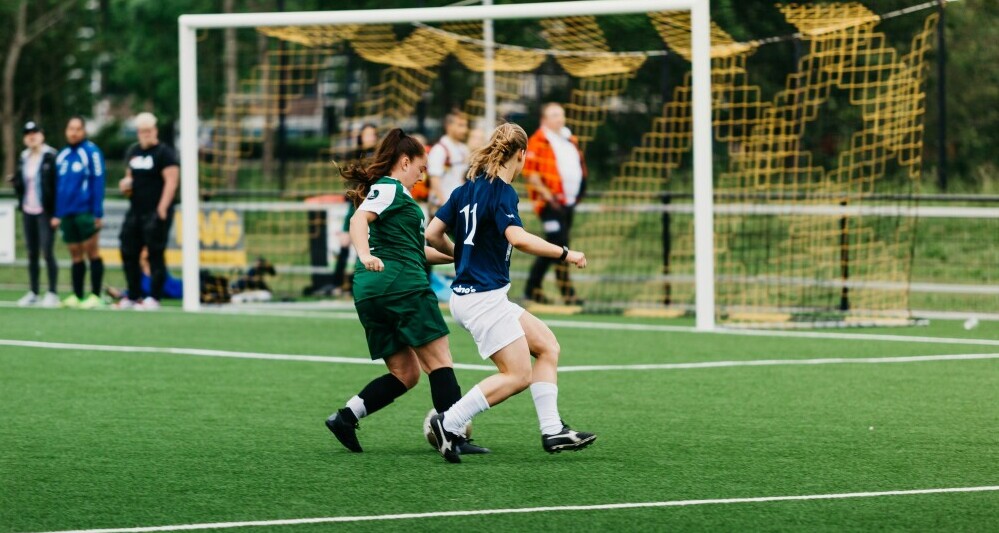
Passing is a fundamental skill in any team sport, from soccer to basketball to hockey. It’s the glue that holds the team together. You might have the best players in the world, but if they can’t connect with each other through passing, the team’s performance will fall apart.
Now, let’s talk chemistry. Team chemistry isn’t just about those off-field bonding activities. It’s built on the field, through every pass and movement. When players know where their teammates are going to be and can pass the ball with confidence, they play as a unit rather than as individuals. That’s where creative passing comes in. By mixing up the usual drills and adding some creativity, players develop a deeper understanding of one another’s playstyles.
Drills have a huge role in this. They’re not just for getting players warmed up; they’re for honing skills, building endurance, and, most importantly, improving teamwork. Creative passing drills take it up a notch, encouraging players to think on their feet, anticipate their teammates’ moves, and strengthen the bonds that make a team more than just a group of individuals.
Top 10 Creative Passing Drills for Improving Team Dynamics
Circle Passing: This drill involves players forming a circle and passing the ball rapidly to each other. It improves quick decision-making and reflexes.
Two-Ball Passing: In this drill, each pair of players passes two balls simultaneously. It’s excellent for enhancing concentration and coordination.
Three-Man Weave: Three players pass the ball while running down the court or field, weaving between each other. It promotes teamwork and precise passing.
Five-Man Star Drill: Players arrange themselves in a star formation, passing the ball in a specific pattern. This drill is great for spatial awareness and timing.
Partner Passing with Movement: Players are paired up and pass the ball while moving around a designated area. It helps players get used to passing under pressure.
Triangle Passing: Three players form a triangle and pass the ball around while one defender tries to intercept. This drill improves accuracy and defensive awareness.
Pass and Follow Drill: After passing, the player follows their pass to a new position. It keeps players moving and thinking about their next move.
Timed Relay Passing: Players form teams and pass the ball down the field or court in a relay race. It adds a fun, competitive element to practice.
Chaos Passing: Players move randomly in a confined space, passing the ball to any open teammate. It enhances decision-making and adaptability.
No-Look Passing Challenge: Players practice passing without looking at their target using peripheral vision. This drill boosts confidence and surprise elements in gameplay.
How to Implement Passing Drills in Practice
Crafting an efficient practice schedule is the cornerstone of successful team development. Start by mapping out your practice sessions in a way that balances skill drills, strength training, and gameplay. Make sure passing drills get ample time, as they are critical for building team chemistry.
Integrating these drills into warm-up routines can be a game-changer. Rather than the usual jog-and-stretch, begin with drills like Circle Passing or Partner Passing with Movement. This not only warms up the muscles but also gets the players mentally engaged right away.
Balancing skill development with gameplay is crucial. Use drills as a bridge between isolated skill work and scrimmages. For instance, after a session focused on Triangle Passing, set up a mini-game where players can apply those skills in a live scenario.
Adjusting drills for different skill levels is key for maximizing their effectiveness. Younger or less experienced players might struggle with No-Look Passing Challenge but thrive with simpler drills like Two-Ball Passing. Conversely, advanced players can be pushed with more complex tasks to keep them engaged and growing.
Measuring the Impact of Passing Drills on Team Chemistry
At the end of the day, improvement is all about measuring progress. Indicators of improved team chemistry can be subtle or obvious. Look for increased fluidity in gameplay, fewer missed passes, and more spontaneous, successful plays.
Getting player feedback is essential. Sometimes, the stats don’t tell the full story. Ask your players how they feel about the drills and if they notice any changes in their own and others’ performance. Players are usually the first to sense shifts in team dynamics.
Monitoring team performance in games is another effective strategy. Pay attention to how well players are executing the passing drills during actual matches. Are they communicating more? Is the ball moving more smoothly between players? These are good signs that the drills are working.
Don’t hesitate to adjust drills based on team progress. If a certain drill isn’t yielding the desired results, tweak it or introduce a new one. Flexibility ensures that the team continues to grow and adapt. Sometimes the best ideas come from simply trying something new and seeing how it plays out.
